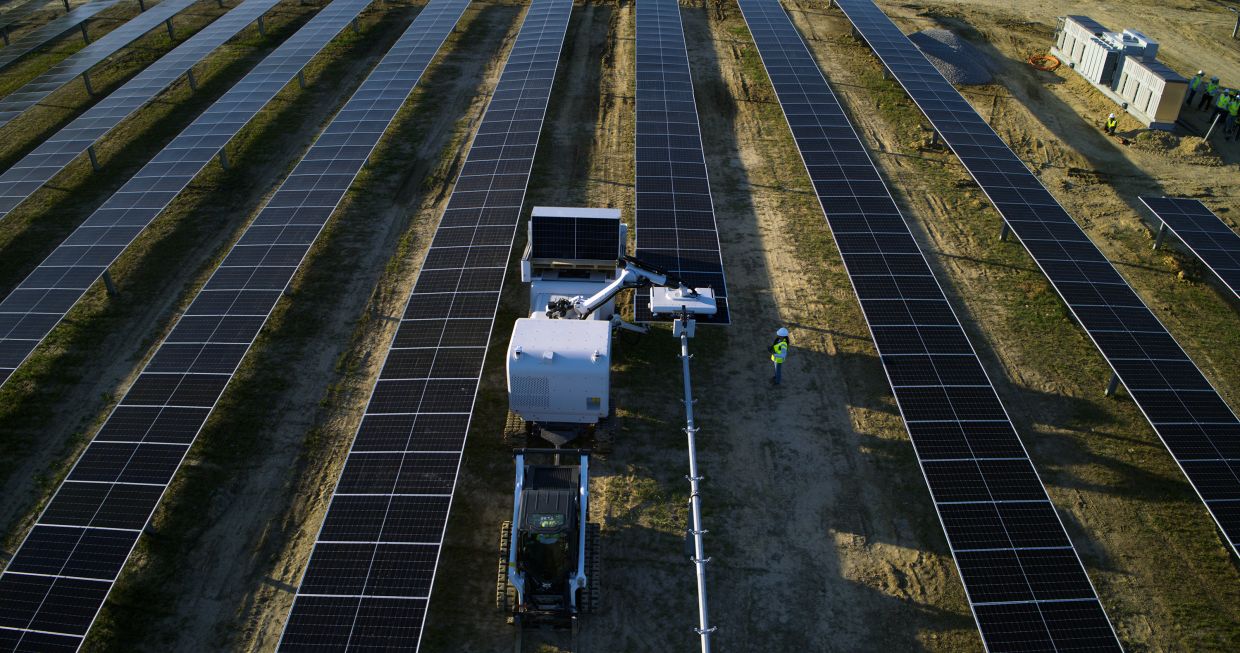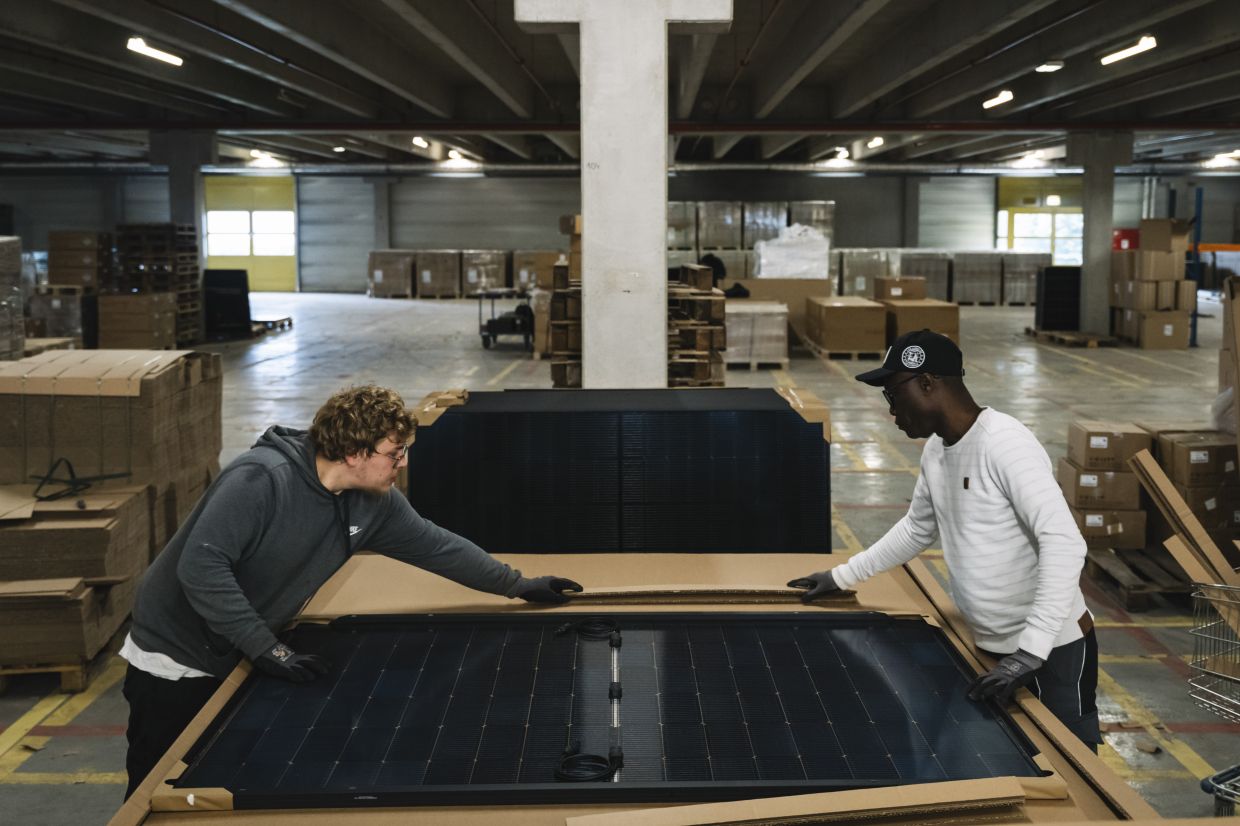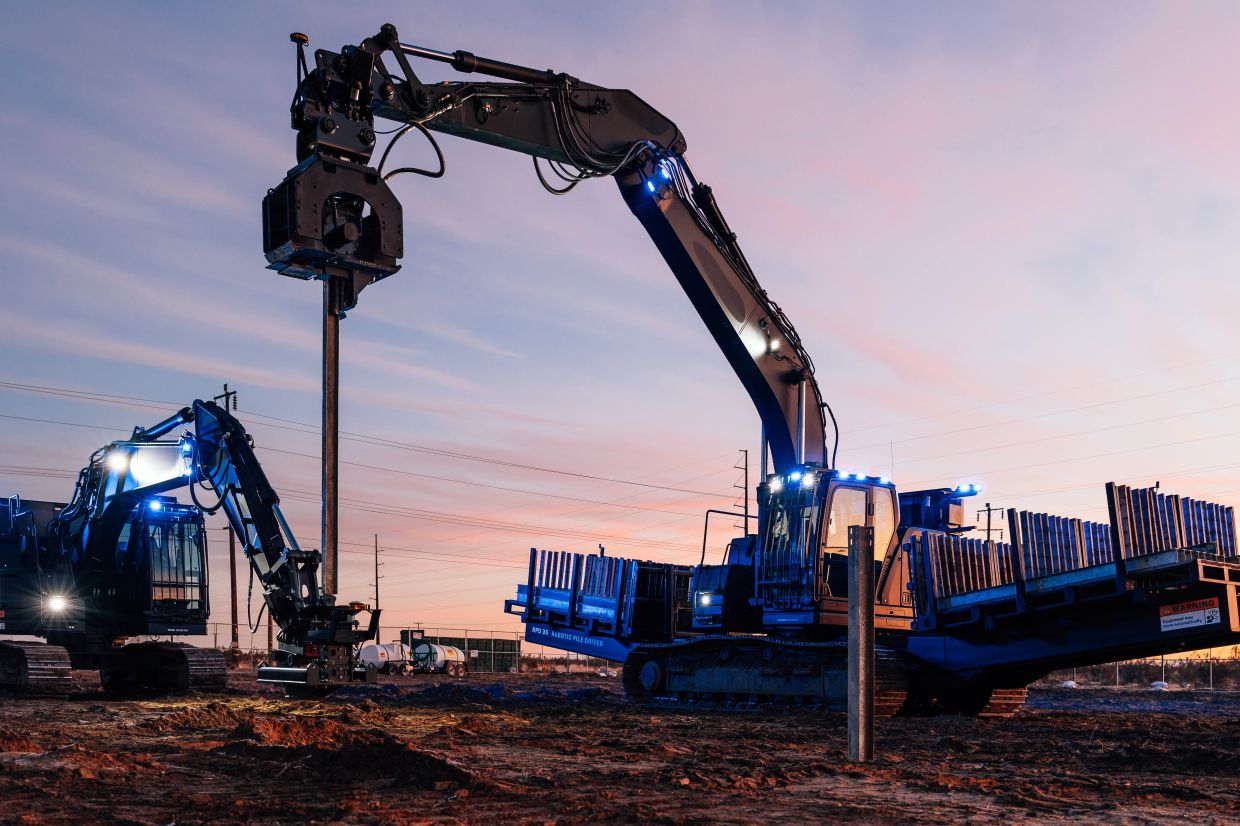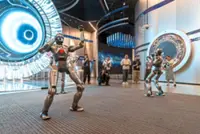An undated photo provided by AES Corporation shows the company’s Maximo robot. To date, AES has used robots to install 10 megawatts of solar panels, about enough to power 2,000 homes. — AES Corporation via The New York Times
The companies racing to build large solar farms across the United States are facing a growing problem: not enough workers.
Now, they’re turning to robots for help.
On July 30, AES Corp, one of the nation’s biggest renewable energy companies, introduced a first-of-its-kind robot that can lug around and install the thousands of heavy panels that typically make up a large solar array. AES said its robot, nicknamed Maximo, would ultimately be able to install solar panels twice as fast as humans can and at half the cost.
Roughly the size of a pickup truck, Maximo has a large extendable arm that uses suction cups to pick up solar panels one by one and lay them neatly into rows, using artificial intelligence and computer vision to position them properly.
After months of testing, AES will put Maximo to work in the California desert later this year to help install panels at the largest solar-plus-battery project under construction, meant to help power Amazon data centres. If all goes well, the company aims to build hundreds of similar AI-powered robots.
It’s part of a growing trend: Energy companies want to use automation to overcome worker shortages, cut costs and speed up the construction of large solar farms, which has traditionally been very labour-intensive. Without drastic changes, these companies say, it will be impossible to deploy solar power fast enough to tackle global warming and meet the country’s rapidly growing need for electricity.
“We’re seeing labour shortages on construction projects in the United States, and it’s a bottleneck to the build-out of solar farms,” Andrés Gluski, CEO of AES, said in an interview. “So how do you get around it? Well, robots can work 24 hours, right? Robots can pick up 80-pound (36kg) solar panels, not a problem.”
The interest in automation comes as US President Joe Biden and other politicians have said that a boom in clean energy could create millions of jobs.
“Whenever automation comes up, there’s always this push and pull,” said Katie Harris, vice president of federal affairs at the BlueGreen Alliance, a partnership of labour unions and environmental groups. “It can help folks be more productive, but we also want to create good-paying union jobs, and automation isn’t always a friend there.”
Demand for solar power is expected to grow astronomically over the next decade thanks to the plummeting costs of panels, hundreds of billions of dollars in federal subsidies and growing interest from tech companies in securing carbon-free electricity for their data centres.
By some estimates, the country will need 475,000 solar workers by 2033, nearly double today’s number. Yet 44% of solar companies already say it is “very difficult” to find qualified workers, according to one recent survey.
It can be especially hard to recruit construction workers for large solar arrays, which are often located in remote desert areas. The job involves lifting and installing hundreds of panels per day, each one weighing 60 pounds (27kg) or more, in places where temperatures can reach in excess of 110°F (43°C).
Getting machines to do the job isn’t easy, however. Unlike the robots that work on assembly lines inside factories, robots that operate outdoors have to withstand rain, dirt and mud while dealing with uneven terrain and other surprises.
To overcome those hurdles, AES is counting on advances in AI that allow its robots to recognise and adjust to different types of solar modules and difficult outdoor conditions.
“One of the biggest issues we had to deal with was glare,” said Deise Yumi Asami, who founded the company’s Maximo project. When the robot moved from New York to Ohio for testing, it suddenly faced different angles of sunlight reflecting off modules, and the company’s engineers had to train the robot to adapt.
To date, AES has installed 10 megawatts of solar panels with its robots, about enough to power 2,000 homes. The company plans to use Maximo to install 100 megawatts by 2025, though that is still a fraction of the 5,000 megawatts of solar the company expects to build in the next three years.
AES hopes to eventually deploy hundreds of robots. Gluski pointed out that AES was one of the first companies to feed power from lithium-ion batteries to the electric grid, a practice that started slowly but has since become widespread. “There’s a learning curve, like with all new technologies,” he said.
Currently, it takes 12 to 18 months to build a large solar farm. But with the United States experiencing a frenzy of data centre construction and many businesses looking to quickly secure energy supplies, AES wants to cut construction times significantly.
Other solar companies are also exploring automation. Built Robotics, a San Francisco-based startup, is using pile-driving robots to build the foundations for solar farms. By automating some processes, a task that typically takes six to seven workers can be done with two workers up to three times as fast, the company said.
Terabase Energy, a startup based in Berkeley, California, has developed a small mobile factory that uses robots to assemble solar modules on-site and install them on racks. The technology has already been used to install 17 megawatts of panels at a solar farm in Arizona, and the company says it has made construction 25% faster.
Matt Campbell, the CEO of Terabase, wants to slash the cost of solar power in half. Solar power is already one of the cheapest ways to generate electricity. But if the world wants to use energy from the sun to replace natural gas for making fertilizer or hydrogen fuels, then solar power needs to get even cheaper, he said.
The costs of the panels themselves don’t have room to fall too much further. “The only way you can get there is to make the construction a lot less expensive,” Campbell said.
Gluski said he doesn’t expect robots to completely replace workers. “My idea is not to hire less people, but to do twice as much with the same number of people,” he said, adding that robots could make the work safer for humans by taking on the taxing work of lifting heavy solar panels in the heat. And AES could hire a wider range of workers to operate the robots. “I don’t have to only hire 220-pound (100kg) men,” he said.
The labourers’ International Union of North America, one of the country’s largest construction unions, did not respond to a request for comment.
Harris, of the BlueGreen Alliance, said she was skeptical that even rapid automation would fully fix the looming shortage of clean-energy workers and that policymakers would still need to invest in training and apprenticeship programs.
When it comes to the future, Gluski said he didn’t think robots would be building wind farms anytime soon, since those tend to be gigantic. But, he added, AES was increasingly interested in using artificial intelligence to do tasks such as identifying potential wind and solar sites that could be developed the fastest or better predicting when wind turbines need maintenance. All of that would make renewable energy cheaper and faster to deploy, he said.
“I have no doubt that in five years time, a lot of this stuff is going to be routine,” Gluski said. – The New York Times
An undated photo provided by AES Corporation shows the company’s Maximo robot. To date, AES has used robots to install 10 megawatts of solar panels, about enough to power 2,000 homes. — AES Corporation via The New York Times
— NO SALES; FOR EDITORIAL USE ONLY WITH NYT STORY SLUGGED ROBOTS SOLAR PANELS BY BRAD PLUMER FOR JULY 30, 2024. ALL OTHER USE PROHIBITED. To date, AES has used robots to install 10 megawatts of solar panels, about enough to power 2,000 homes. (AES Corporation via The New York Times)
An undated photo provided by AES Corporation shows the company’s Maximo robot. It can install hundreds of solar panels, often weighing 60 pounds or more, in a single day, even when temperatures rise into the 100s Fahrenheit. — AES Corporation via The New York Times
— NO SALES; FOR EDITORIAL USE ONLY WITH NYT STORY SLUGGED ROBOTS SOLAR PANELS BY BRAD PLUMER FOR JULY 30, 2024. ALL OTHER USE PROHIBITED. AES CorporationÕs Maximo robot. It can install hundreds of solar panels, often weighing 60 pounds or more, in a single day, even when temperatures rise into the 100s Fahrenheit. (AES Corporation via The New York Times)
Workers in Solago, a company that sells rooftop solar panels and plug-in versions, in Hilden, Germany, on July 10, 2024. Solago, which opened in a small storefront in a suburb of Düsseldorf, has since grown to a fill a warehouse roughly the size of a Manhattan square block. — The New York Times
Workers in Solago, a company that sells rooftop solar panels and plugin versions, in Hilden, Germany, on July 10, 2024. (Patrick Junker/The New York Times)
An undated photo provided by Built Robotics shows one of the company’s pile-driving robots, used to build the foundations for solar farms. Energy companies say a labor shortage is one big obstacle to installing more solar power. They’re turning to machines to speed things up. — Built Robotics via The New York Times
— NO SALES; FOR EDITORIAL USE ONLY WITH NYT STORY SLUGGED ROBOTS SOLAR PANELS BY BRAD PLUMER FOR JULY 30, 2024. ALL OTHER USE PROHIBITED. — Built Robotics uses machines to lay the foundations for solar farms. (Built Robotics via The New York Times)









